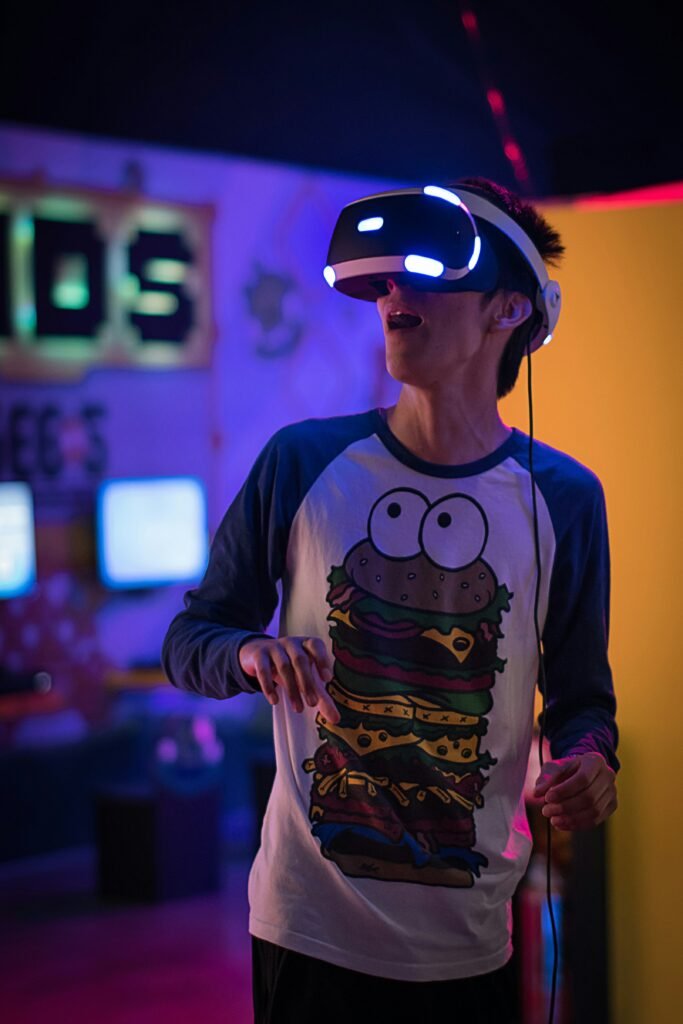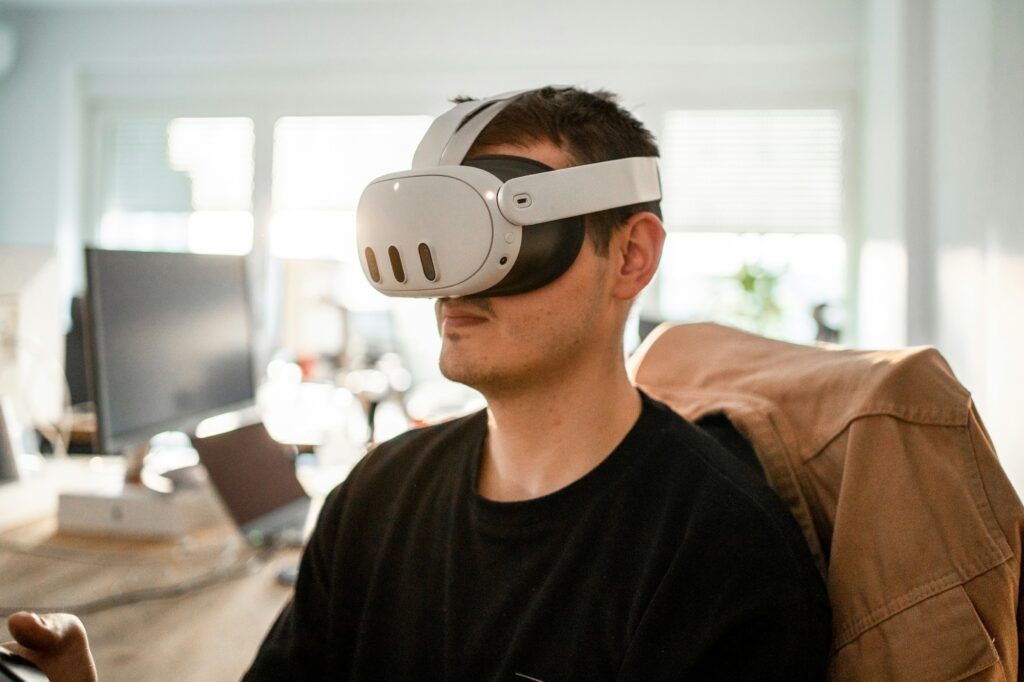Welcome to an exciting exploration into the valuable role that virtual reality plays in medical training. From immersing you in realistic surgery simulations to allowing you to practice complex procedures in a safe environment, virtual reality technology is revolutionizing the way medical professionals are trained. Let’s dive into how this innovative tool is shaping the future of healthcare education. Have you ever wondered how virtual reality (VR) technology is revolutionizing the way medical professionals are trained? In this article, we’ll delve into the fascinating world of VR in medical training and explore its incredible benefits and applications.

This image is property of images.unsplash.com.
Check out our Product Reviews
The Evolution of Medical Training
Medical training has evolved significantly over the years, from traditional textbooks and lectures to hands-on simulations and now, virtual reality technology. VR allows medical students and professionals to immerse themselves in realistic scenarios, gaining invaluable experience without putting real patients at risk.
Traditional Medical Training Methods
In the past, medical training primarily consisted of lectures, textbooks, and observing experienced professionals in clinical settings. While these methods are still valuable, they have limitations in providing hands-on practice and real-life scenarios.
Hands-On Simulations
Hands-on simulations have become more prevalent in medical training, allowing students to practice procedures and techniques in a controlled environment. While effective, these simulations may lack the realism and complexity of real-life scenarios.
Virtual Reality Technology
Virtual reality technology has emerged as a game-changer in medical training, offering immersive and realistic simulations that replicate actual medical procedures, surgeries, and patient interactions. VR allows medical professionals to practice in a risk-free environment while experiencing the pressure and challenges of real-life situations.
Benefits of Virtual Reality in Medical Training
The adoption of virtual reality technology in medical training comes with a multitude of benefits for students, educators, and patients alike. Let’s explore some of the key advantages of using VR in medical education.
Enhanced Immersion and Realism
Virtual reality technology provides an unparalleled level of immersion and realism, allowing medical students to feel like they are actually performing surgeries or treating patients. This immersive experience helps enhance learning retention and skill development.
Safe and Risk-Free Practice
One of the most significant benefits of VR in medical training is the ability to practice procedures and techniques in a safe and risk-free environment. This eliminates the potential for harm to real patients and allows students to make mistakes and learn from them without consequences.
Individualized Learning
Virtual reality simulations can be tailored to the specific needs and skill levels of individual students, offering personalized learning experiences. This individualized approach allows students to progress at their own pace and focus on areas where they need the most improvement.
Collaborative Learning and Teamwork
VR technology enables collaborative learning and teamwork among medical students, allowing them to work together on complex cases and scenarios. This collaborative approach helps build communication skills, teamwork abilities, and the confidence to work effectively in a healthcare team.
Cost-Effective Training
While setting up virtual reality simulations may require an initial investment, the long-term cost-effectiveness of VR in medical training is undeniable. Virtual reality technology eliminates the need for expensive equipment and resources associated with traditional training methods, making it a more affordable and sustainable option in the long run.
Check out our Product Reviews
Applications of Virtual Reality in Medical Training
The versatility of virtual reality technology allows for a wide range of applications in medical training, from surgical simulations to patient diagnosis and treatment. Let’s explore some of the key areas where VR is making a significant impact in medical education.
Surgical Simulations
Virtual reality simulations provide medical students and practicing surgeons with the opportunity to practice complex surgical procedures in a realistic, hands-on environment. VR allows surgeons to hone their skills, improve their dexterity, and familiarize themselves with new techniques before performing surgeries on actual patients.
Anatomy Education
Virtual reality technology offers a dynamic and interactive way to learn human anatomy, allowing medical students to explore the human body in 3D space. VR simulations can provide detailed insights into anatomical structures, organs, and systems, enhancing students’ understanding and retention of complex anatomical concepts.
Emergency Medicine Training
Virtual reality simulations can be used to prepare medical professionals for high-stress emergency situations, such as trauma resuscitations or mass casualty incidents. VR training scenarios can help improve decision-making skills, communication under pressure, and the ability to prioritize patient care in critical situations.
Patient Empathy and Communication
Virtual reality can also be used to enhance the communication skills and empathy of medical professionals by simulating patient interactions and scenarios. By immersing themselves in virtual conversations with simulated patients, medical students can learn how to communicate effectively, show empathy, and provide compassionate care.
Medical Device Training
Virtual reality technology can be utilized to train medical professionals in the use of complex medical devices and equipment. VR simulations can provide hands-on practice with medical devices, such as surgical robots or imaging machines, allowing healthcare providers to become proficient in their operation and maintenance.
Challenges and Limitations of Virtual Reality in Medical Training
While virtual reality technology offers numerous benefits and possibilities in medical education, there are also challenges and limitations that need to be considered. Let’s explore some of the key obstacles that may impact the widespread adoption of VR in medical training.
Initial Investment and Implementation
Setting up virtual reality simulations for medical training requires a significant initial investment in hardware, software, and infrastructure. The costs associated with developing and maintaining VR programs may be prohibitive for some educational institutions or healthcare facilities, limiting access to this technology.
Technical Complexity and Maintenance
Virtual reality technology is continuously evolving, and staying current with the latest hardware and software advancements can be challenging. Additionally, VR systems require regular maintenance, updates, and technical support to ensure optimal performance, which may pose logistical challenges for medical training programs.
Integration with Curriculum and Assessment
Integrating virtual reality simulations into existing medical school curricula and assessment methods can be complex and time-consuming. Medical educators need to develop new teaching strategies, assessments, and learning outcomes that align with the immersive nature of VR technology, which may require additional resources and training.
Data Security and Privacy Concerns
Virtual reality simulations may involve the use of sensitive patient data or personal information, raising concerns about data security and privacy. Healthcare providers and educational institutions must ensure that VR systems comply with strict data protection regulations and privacy laws to safeguard patient confidentiality and prevent unauthorized access.
Limited Realism and Interactivity
While virtual reality technology offers a high level of immersion and realism, it may not fully replicate the complexity and unpredictability of real-life medical scenarios. VR simulations may lack certain tactile feedback, sensory cues, or emotional responses that are essential for developing clinical skills and decision-making abilities in medical professionals.

This image is property of images.unsplash.com.
Future Directions and Innovations in Virtual Reality Medical Training
Despite the challenges and limitations, the future of virtual reality in medical training looks promising, with ongoing advancements and innovations in VR technology. Let’s explore some of the exciting developments and future directions in the field of VR medical education.
Artificial Intelligence Integration
Artificial intelligence (AI) technology is being increasingly integrated with virtual reality simulations to provide more realistic and interactive learning experiences. AI algorithms can adapt training scenarios based on the learner’s performance, provide real-time feedback, and personalize the learning experience to individual needs.
Haptic Feedback and Sensory Simulation
Incorporating haptic feedback devices and sensory simulation technology into virtual reality simulations can enhance the realism and interactivity of medical training scenarios. Haptic feedback enables users to feel tactile sensations, textures, and vibrations, adding a new dimension of sensory immersion to VR experiences.
Mobile VR and Remote Training
Advancements in mobile virtual reality technology are enabling remote training and telemedicine applications in medical education. Medical students and professionals can access VR training modules on portable devices, such as smartphones or tablets, allowing for flexible learning opportunities and remote collaboration with colleagues.
Virtual Patient Avatars and Personalized Learning
Virtual patient avatars are being developed to simulate a wide range of medical conditions, symptoms, and treatment scenarios in virtual reality. These patient avatars can provide realistic interactions, feedback, and diagnostic challenges for medical students, offering personalized learning experiences tailored to their specific educational needs.
Simulation-Based Competency Assessment
Virtual reality technology is increasingly being used for competency assessments and evaluations in medical training. VR simulations allow educators to objectively measure students’ clinical skills, decision-making abilities, and situational awareness, providing valuable feedback and performance metrics for ongoing professional development.
Global Collaborative Learning Platforms
Virtual reality platforms are facilitating global collaboration and knowledge-sharing among medical students and professionals from diverse backgrounds and geographic locations. VR-enabled learning environments can connect learners in virtual classrooms, simulation labs, and interactive conferences, fostering a culture of collaboration, innovation, and continuous learning in healthcare.
Conclusion
As virtual reality technology continues to advance and expand its applications in medical training, the opportunities for innovation and improvement in healthcare education are endless. By harnessing the power of VR simulations, medical students and professionals can enhance their skills, knowledge, and patient care outcomes, ultimately transforming the future of medical training and practice. So, are you ready to step into the exciting world of virtual reality in medical education? The possibilities await – immerse yourself and explore the limitless potential of VR in medical training.
Check out our Product Reviews